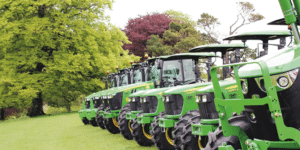
The South West contains upland areas such as Dartmoor and Exmoor with very high rainfalls, ericaceous soils which support lower productivity cropping, as well as acting as a carbon sink with peat. The position of the South West also impacts the climate – the region has higher than average sunshine hours ratio, enabling fast growing conditions and low frost frequency which suits fertile grasslands and arable areas.
This affects the agriculture in the South West, as does the geology and geomorphology of the hills and valleys. Steep gradients and winding lanes suit smaller scale mechanisation rather than large agri-business, and the average farm size in the region is still relatively small compared to (for example) East Anglia as a result.
These factors combine to provide the UK’s core dairy region, producing over £1 billion cheese annually and a vibrant and effective food sector, with high welfare and provenance with significant wider export potential.